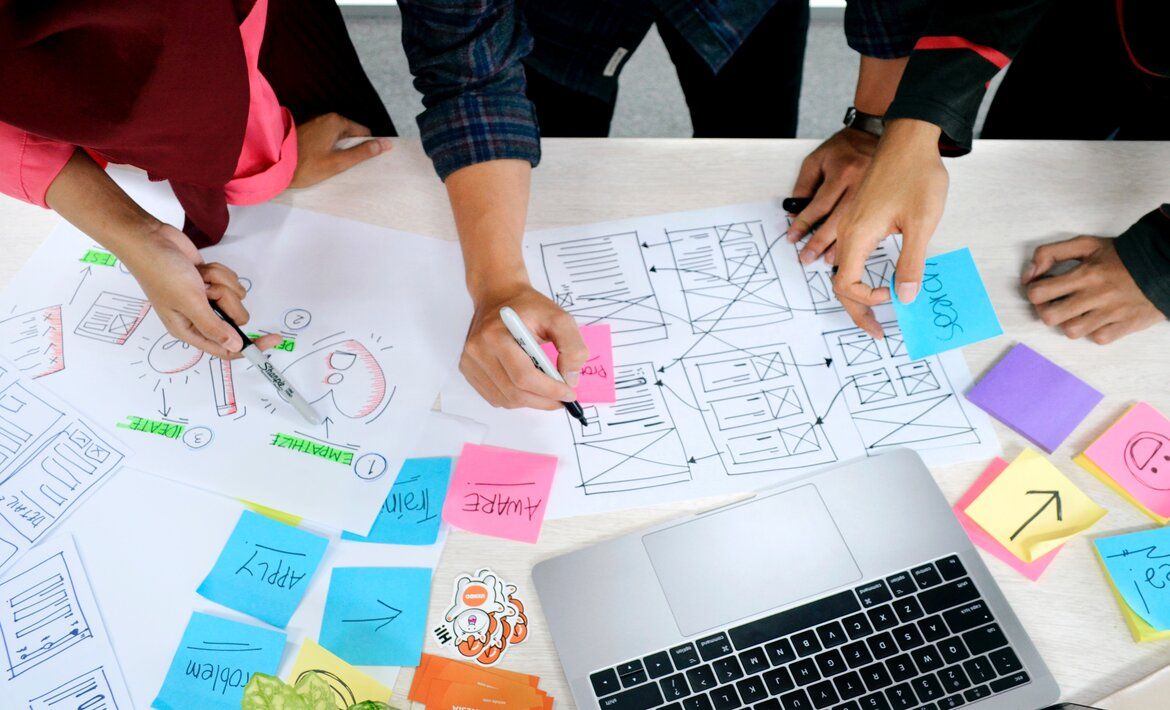As the world becomes increasingly digital, more industries seek SaaS companies' services to revamp their business operations.
Equally, as a reaction to the growing demand for digital solutions, numerous products and solutions are available to bridge the gap.
It’s fair to say that any software is as good as its technical ability to solve a need — for example, messaging tools, accounting, or customer relationship management (CRM) software.
Here’s the problem.
Current B2B customers have plenty of options to choose from and better pricing or product bundling. As such, it’s challenging to command customer loyalty.
This leaves an exceptional B2B customer experience as the only differentiator.
So, how can you turbo-charge your B2B customer experience?
We’ll tell you how.
Train your staff on B2B customer experience
Handling B2B buyers can prove difficult without prior planning and preparation. Every B2B customer has unique needs, just as every business has a unique area of specialization.
Below are some of the effects of untrained workers when dealing with B2B customers:
- High instances of subscription cancellation and failed renewals
- Low ratings in third-party consumer review sites
- A dismal number of repeat buyers
- Multiple complaints and poor customer experience
The training and education of customer service representatives is crucial for bridging knowledge gaps, dispensing new information, and clarifying technical aspects of any product.
Here are some ideas that can shape your training journey:
- Online resources: As your company expands, you’ll need to train B2B marketers, support staff, and a growing team for your operations. A significant number of employees require frequent training, which is costly for any firm. With that in mind, you can cut costs by availing self-paced courses, write-ups, videos, and other valuable information to your staff members.
- Coaching: Customer expectations are ever-changing — without regular updates, it’s difficult to fulfill these expectations continuously. Your marketing department can benefit from one on one sessions, group training, or external trainers.
- Soft skill strengthening: Customer issues are diverse and dynamic, making them difficult to anticipate or plan for. As such, it’s wise to empower your employees to handle any emergencies independently through dedicated training. Slot in sessions or materials for communication skills, work ethic, emotional intelligence, problem-solving, and positive language. These skills can be the difference between tempers flaring, losing a prospect, and growing your revenues.
Embrace customer experience technology
Fact: Businesses acquire the modern B2B buyer through online channels.
Equally, most B2B customers comprise young entrepreneurs who are tech-savvy and informed. For them, customer experience matters, and they have a preference for brands that use digital solutions in the buying process.
Here are some of the tools you can incorporate.
Social media
Social media is one of the primary technologies that every SaaS company should utilize. Popular social media sites like LinkedIn and Twitter are big for prospecting and enhancing customer experience, respectively.
In the case of Twitter, you can set up a profile and join in discussions relevant to your business. You can also use it to solve customer complaints quickly — this delights customers and helps market your business.
A point to note: Social media platforms attract vast volumes of traffic and require constant monitoring. This has the potential to hurt your chances of a superior customer experience. Therefore, it’s wise to invest in social media software to schedule posts and overall management.
Artificial intelligence
To move to the next level of customer experience, you’ll need a considerable dose of personalization. That is what AI brings to your strategy.
This technology can collect and analyze vast amounts of data in a short timeframe. For example, the system can gather data from visited sections of the website, browsing history, and ad consumption.
From that, it will suggest content, resources, and product offers that best serve a B2B buyer. Using AI, you can confidently create an authentic connection and, subsequently, a fruitful relationship with your buyer.
CRM system
Businesses need SaaS CRM software for enhanced customer experiences. It provides a centralized platform for managing customer interactions, enabling efficient tracking of sales, marketing, and support activities. With real-time data access, personalised communication, and streamlined workflows, businesses can deliver exceptional service, build lasting relationships, and drive revenue growth.
Utilize the B2B customer journey
Customer journey is a theoretical yet practical approach that aims to understand customer behavior and intents — this assists in the forecasting and preparation of the sales process. Here are the tips on how to build a SaaS sales process from scratch.
This is a table showing the customer journey and how a B2B buyer interacts with it:
Buying Stage
TouchPoint
Awareness
Radio, E-mail, Online Ads, PPC
Consideration
Reviews, Blog, Direct Email
Purchase
E-commerce Site, Physical store, Website
Retention
Community Forum, Q&A resources
Advocacy
Social Media, Blog, and Newsletter
So, how can you utilize the purchase journey to boost your customer experience?
Mitigate disconnects between various teams
The role of developing the buyer journey lies in the hands of the marketing team. Even so, other departments assist in the execution of the plan. Without cohesion, the process won’t be as effective, which leads to poor customer experience.
However, careful coordination can lead to an exceptional B2B customer experience.
Here are some ideas to make this happen:
- Teamwork in customer service: For a SaaS customer, a sales rep will do the onboarding process. Even so, it’s the role of IT staff to execute the order and personalize the product. Without collaboration, it’s difficult to satisfy the client, resulting in a poor B2B customer experience.
- Central system: When a B2B customer joins the sales funnel, it’s hard to trace them if not well profiled. That’s why it’s essential to acquire sales software to capture customer data and track subsequent movement.
The system will also create a customer profile and keep a record of service disputes and solutions — this results in improved customer experience.
Keep monitoring and changing customer experience strategies
Fact: Customer expectations keep changing— the same applies to methods of improving customer experiences.
To keep your customers glued to your services, you’ll need to check the current methods and replace them with fresh ideas if need be.
So, what new ideas can you apply for an improved customer experience?
- Interchange the content types between videos, infographics, tips, quizzes, and live sessions.
- Adopt an Agile development approach to rapidly and continually test new features, functionalities and user journeys.
- Revamp e-commerce themes to create a brand new look and feel for business customers.
- Monitor your email list to ensure you’re sending the most relevant content to subscribers.
- Update, change the existing one or make a new landing page when you notice a high bounce rate.
Create and distribute useful content
There’s no better way to interact with your customers than content marketing. Business customers feel more valued when they find fresh and valuable content regularly.
As you assist them in their search, the valuable content will exceed customer expectations.
Use content to improve engagement
Customers are more likely to consume your content when they’re more involved in its creation. This involvement also enhances the B2B customer experience because it is relatable and sufficiently answers their queries.
A few ideas for this include:
- Content suggestions: Once you post an item (e.g., a picture), you can ask your customers to leave comments. You can also leave a leading question about the post to gather valuable insights.
- Reward program: Alternatively, you can offer rewards to business customers who tag others with the most popular comment or by picking winners randomly.
With the above ideas, you’ll receive better engagement and useful suggestions to shape your content plan. The result is a supercharged customer experience.
Develop easy to digest tips and lists
Sometimes businesses spend time creating substantial and comprehensive pieces of information. Though vital, a healthy mix with shorter content goes a long way in delighting customers.
The information should be easy to digest — in a short format, no longer than 500 words.
Here are some examples of areas you can explore:
- Tutorial of how to use a product
- Expert advice on how to take care of software and minimize hitches
- Useful industry trends, news, and product development
- Answers to Frequently Asked Questions
Create relatable content
A typical SaaS client will visit the website that provides the most comprehensive and valuable answer to their problems.
Here’s how relatable content improves customer experience:
- Reduces bounce rate associated with irrelevant content
- Business customers spend less time looking for relevant products
- B2B buyers find more personalized products
So, how can you create a consistent experience to score these benefits?
- Polls/Surveys: You’ll need to remain active by initiating polls, open-ended questions, surveys, and mining data. A social media platform like Twitter is one of the best platforms for listening to your customers. The answers will help you to develop content plans and strategies.
- Search engines: It’s also advisable to refer to search engines for inspiration. Once you enter a topic of interest, you’ll get search results from different business websites. The different topics can give you hints on areas to create customer-centric content. Alternatively, you can use keyword tools like Keyword Planner, WordStream, Wordtracker, or KWfinder to discover popular terms and topics.
Conclusion
Achieving the optimum customer experience is a continuous process that requires implementing systems, planning, fostering customer relationships, and utilizing marketing platforms. Implement one strategy at a time to achieve smooth, natural, and consistent progression. For companies in this industry, selecting the best CRM for SaaS can greatly enhance their ability to deliver top-notch customer experiences.
Table of Contents
Crack the sales formula with CRM Lab
Twice a month, receive actionable CRM content to your inbox.



